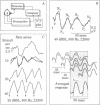Abstract
Computer techniques readily extract from the brainwaves an orderly sequence of brain potentials locked in time to sound stimuli. The potentials that appear 8 to 80 msec after the stimulus resemble 3 or 4 cycles of a 40-Hz sine wave; we show here that these waves combined to form a single, stable, composite wave when the sounds are repeated at rates around 40 per sec. This phenomenon, the 40-Hz event-related potential (ERP), displays several properties of theoretical and practical interest. First, it reportedly disappears with surgical anesthesia, and it resembles similar phenomena in the visual and olfactory system, facts which suggest that adequate processing of sensory information may require cyclical brain events in the 30- to 50-Hz range. Second, latency and amplitude measurements on the 40-Hz ERP indicate it may contain useful information on the number and basilar membrane location of the auditory nerve fibers a given tone excites. Third, the response is present at sound intensities very close to normal adult thresholds for the audiometric frequencies, a fact that could have application in clinical hearing testing.
Full text
PDF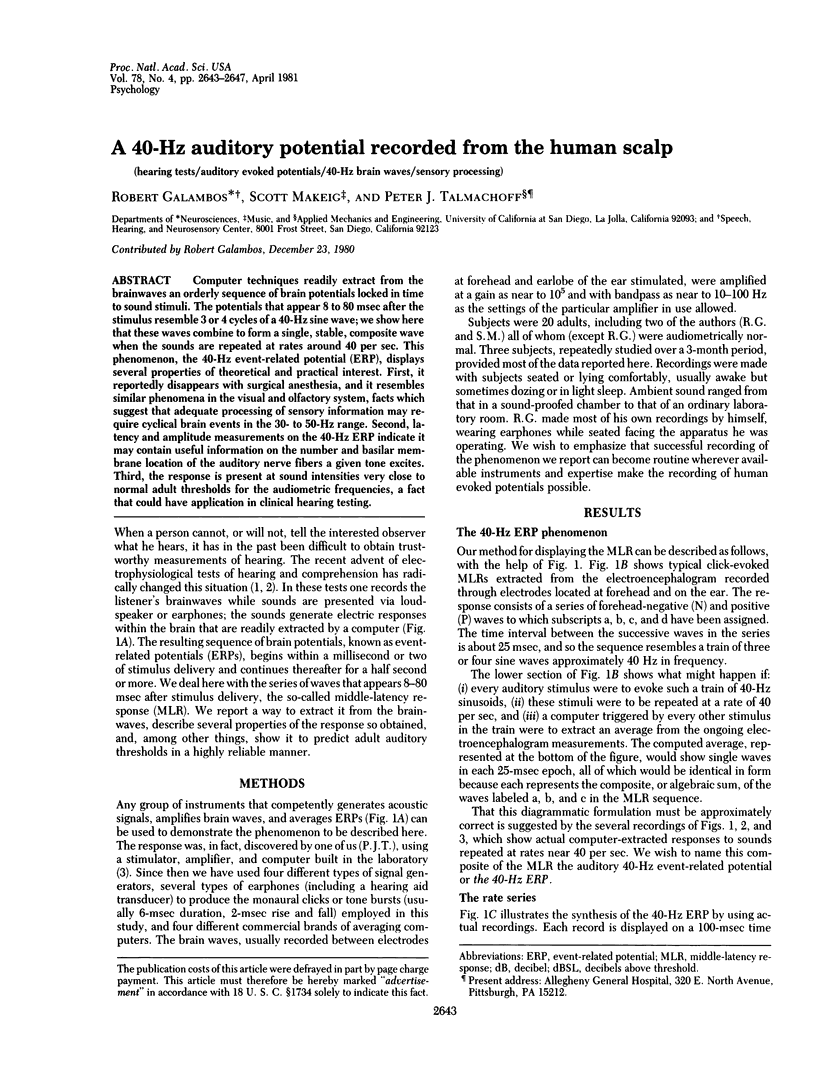
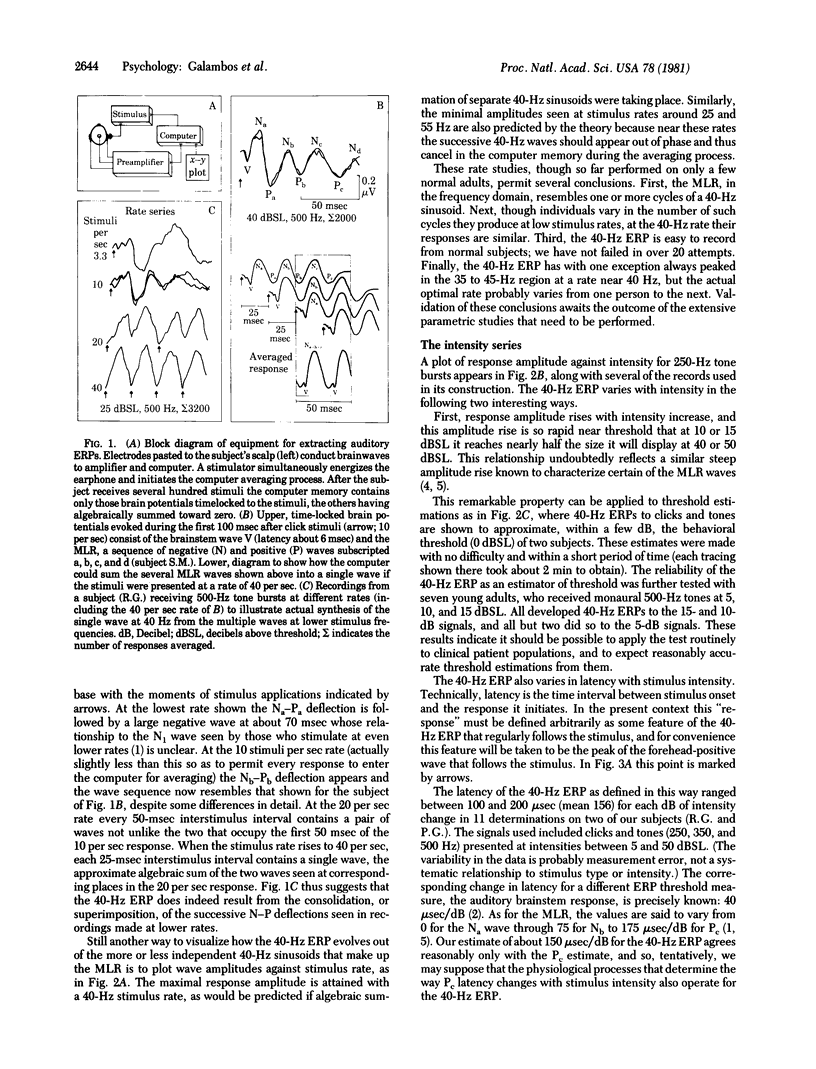
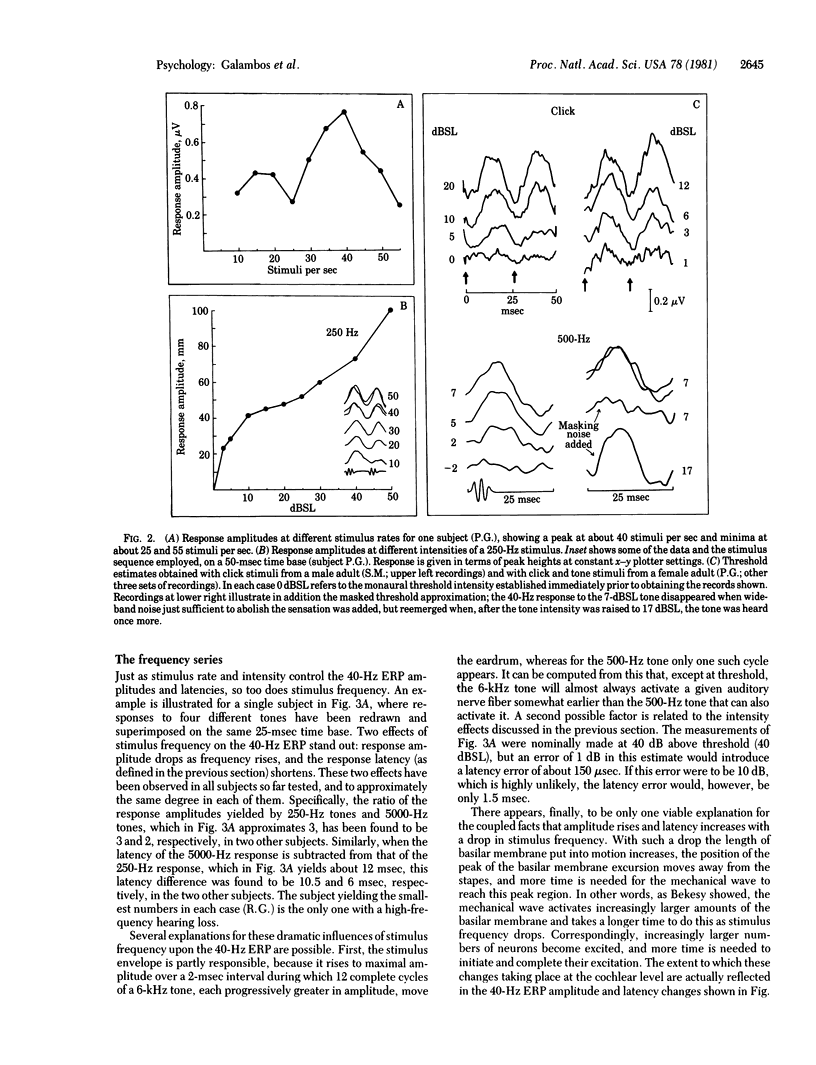
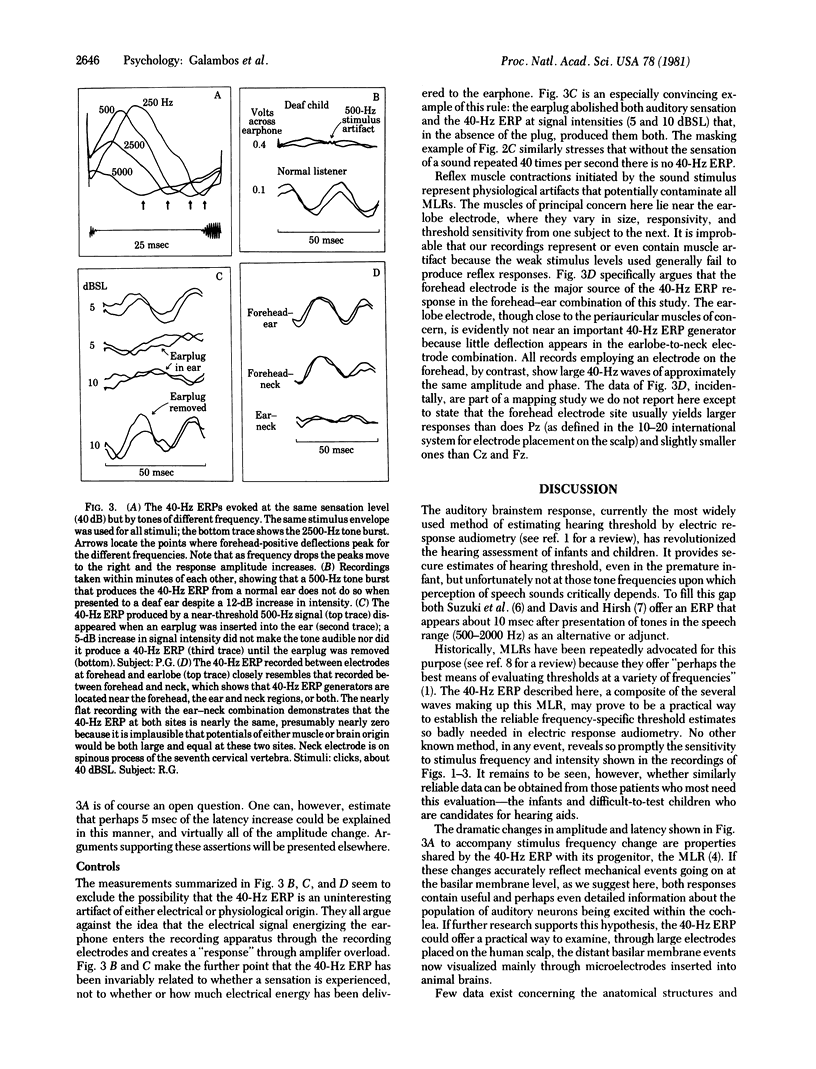
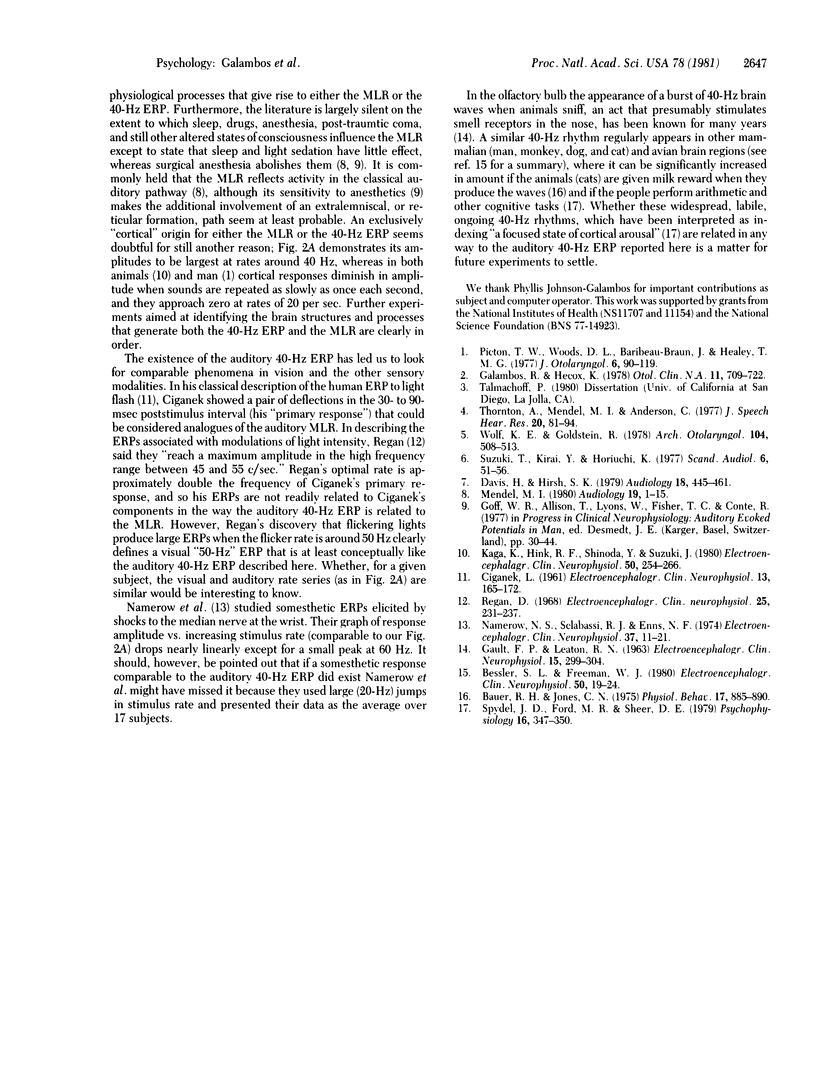
Images in this article
Selected References
These references are in PubMed. This may not be the complete list of references from this article.
- Bauer R. H., Jones C. N. Feedback training of 36 - 44 HZ EEG activity in the visual cortex and hippocampus of cats: evidence for sensory and motor involvement. Physiol Behav. 1976 Dec;17(6):885–890. doi: 10.1016/0031-9384(76)90003-2. [DOI] [PubMed] [Google Scholar]
- Bressler S. L., Freeman W. J. Frequency analysis of olfactory system EEG in cat, rabbit, and rat. Electroencephalogr Clin Neurophysiol. 1980 Oct;50(1-2):19–24. doi: 10.1016/0013-4694(80)90319-3. [DOI] [PubMed] [Google Scholar]
- CIGANEK L. The EEG response (evoked potential) to light stimulus in man. Electroencephalogr Clin Neurophysiol. 1961 Apr;13:165–172. doi: 10.1016/0013-4694(61)90132-8. [DOI] [PubMed] [Google Scholar]
- Davis H., Hirsh S. K. A slow brain stem response for low-frequency audiometry. Audiology. 1979 Nov-Dec;18(6):445–461. doi: 10.3109/00206097909072636. [DOI] [PubMed] [Google Scholar]
- GAULT F. P., LEATON R. N. Electrical activity of the olfactory system. Electroencephalogr Clin Neurophysiol. 1963 Apr;15:299–304. doi: 10.1016/0013-4694(63)90099-3. [DOI] [PubMed] [Google Scholar]
- Galambos R., Hecox K. E. Clinical applications of the auditory brain stem response. Otolaryngol Clin North Am. 1978 Oct;11(3):709–722. [PubMed] [Google Scholar]
- Kaga K., Hink R. F., Shinoda Y., Suzuki J. Evidence for a primary cortical origin of a middle latency auditory evoked potential in cats. Electroencephalogr Clin Neurophysiol. 1980 Nov;50(3-4):254–266. doi: 10.1016/0013-4694(80)90153-4. [DOI] [PubMed] [Google Scholar]
- Mendel M. I. Clinical use of primary cortical responses. Audiology. 1980;19(1):1–15. doi: 10.3109/00206098009072645. [DOI] [PubMed] [Google Scholar]
- Namerow N. S., Sclabassi R. J., Enns N. F. Somatosensory responses to stimulus trains: normative data. Electroencephalogr Clin Neurophysiol. 1974 Jul;37(1):11–21. doi: 10.1016/0013-4694(74)90241-7. [DOI] [PubMed] [Google Scholar]
- Picton T. W., Woods D. L., Baribeau-Braun J., Healey T. M. Evoked potential audiometry. J Otolaryngol. 1976 Apr;6(2):90–119. [PubMed] [Google Scholar]
- Regan D. A high frequency mechanism which underlies visual evoked potentials. Electroencephalogr Clin Neurophysiol. 1968 Sep;25(3):231–237. doi: 10.1016/0013-4694(68)90020-5. [DOI] [PubMed] [Google Scholar]
- Spydell J. D., Ford M. R., Sheer D. E. Task dependent cerebral lateralization of the 40 Hertz EEG rhythm. Psychophysiology. 1979 Jul;16(4):347–350. doi: 10.1111/j.1469-8986.1979.tb01474.x. [DOI] [PubMed] [Google Scholar]
- Suzuki T., Hirai Y., Horiuchi K. Auditory brain stem responses to pure tone stimuli. Scand Audiol. 1977;6(1):51–56. doi: 10.3109/01050397709044998. [DOI] [PubMed] [Google Scholar]
- Thornton A. R., Mendel M. I., Anderson C. V. Effects of stimulus frequency and intensity on the middle componenets of the averaged auditory eletroencephalic response. J Speech Hear Res. 1977 Mar;20(1):81–94. doi: 10.1044/jshr.2001.81. [DOI] [PubMed] [Google Scholar]
- Wolf K. E., Goldstein R. Middle component averaged electroencephalic responses to tonal stimuli from normal neonates. Initial report. Arch Otolaryngol. 1978 Sep;104(9):508–513. doi: 10.1001/archotol.1978.00790090026006. [DOI] [PubMed] [Google Scholar]



